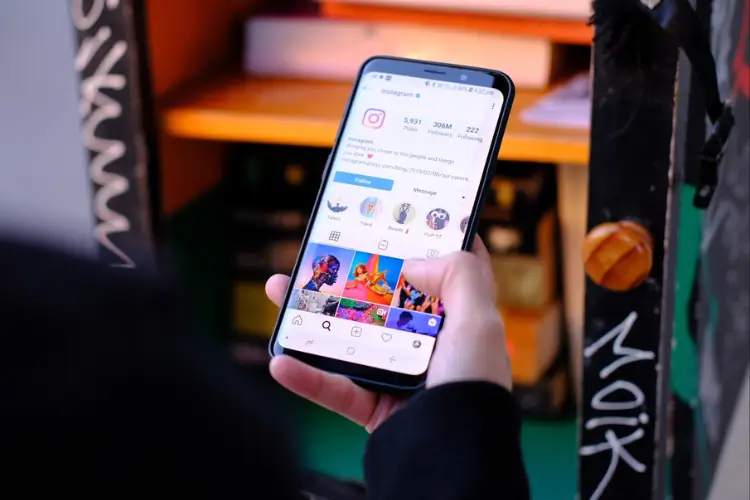In today’s digital age, where social media plays a central role in our lives, it has become imperative for businesses to harness the power of these platforms for effective marketing. One strategy that has gained significant traction is the use of social media tags. Social media tags, also known as hashtags, are a powerful tool that can elevate your marketing efforts and boost your brand’s visibility.
In this article, we will explore what social media tags are, the benefits of including them in a marketing strategy, and how to effectively use them to maximize your reach and engagement.
What are Social Media Tags?
Social media tags, or hashtags, are keywords or phrases preceded by the pound or hash symbol (#). They are used to categorize and organize content on social media platforms such as Twitter, Instagram, Facebook, and LinkedIn. When users click on or search for a specific tag, they are directed to a feed of posts that include that particular tag. This enables users to discover and engage with relevant content beyond their immediate network. If you’re looking to increase TikTok followers, consider services like boost TikTok followers to enhance your social media presence.
Benefits of Including Tags in a Marketing Strategy
In the vast and ever-expanding landscape of social media, capturing your audience’s attention and standing out from the crowd is no easy task. However, incorporating social media tags into your marketing strategy can yield numerous benefits and give your brand a competitive edge.
Let’s delve into the advantages of leveraging social media tags:
- Increased Visibility: By incorporating relevant and popular tags in your social media posts, you increase the likelihood of your content being discovered by a wider audience. This expanded visibility exposes your brand to potential customers who may not have been aware of your presence otherwise.
- Targeted Reach: Social media tags allow you to specifically target your desired audience. By using industry-specific or niche tags, you can ensure that your content reaches the individuals who are most likely to be interested in your products or services. This targeted approach increases the chances of engagement and conversions.
- Enhanced Engagement: Social media tags facilitate engagement by connecting users with shared interests. When users come across a post with a tag they find interesting, they are more likely to engage with it through likes, comments, and shares. This engagement not only increases your reach but also builds a sense of community around your brand.
- Trend Awareness: Tags are often associated with trending topics or events. By incorporating relevant trending tags into your marketing strategy, you can align your brand with the latest conversations and tap into the buzz around them. This can help you stay relevant and generate buzz for your brand.
How to Use Tags in Marketing
Even though social media tagging has become virtually ubiquitous, many people still don’t know how to use them effectively. Keep reading to find out more about how you can make the most of tagging on social media, and how to get more marketing ROI from it:
Research and Identify Relevant Tags
Start by conducting thorough research to identify the most relevant and popular tags in your industry or niche. Tools like RiteTag, Hashtagify, and Tagboard can assist you in finding trending and related tags. Consider both broad and specific tags to reach a wider audience while targeting your ideal customers.
For example, if you are a fitness apparel brand, you might use tags like #fitnessmotivation, #workoutgear, and #activewear to connect with fitness enthusiasts.
Use a Mix of Popular and Niche Tags
While it is essential to include popular tags to maximize visibility, it is equally important to incorporate niche tags that resonate with your target audience. Niche tags help you connect with a more focused and engaged community.
Continuing with the fitness apparel brand example, you might use popular tags like #fitfam and #healthy lifestyle along with niche tags like #yogalife and #crossfitcommunity to reach both the broader fitness community and specific interest groups.
Create Branded Tags
Consider creating unique branded tags that are associated with your brand or specific campaigns. Branded tags can help you build brand recognition and encourage user-generated content. Make sure your branded tags are concise, easy to remember, and reflect your brand’s values and personality.
For instance, a coffee shop called “BeanBuzz” could create a branded tag like #BeanBuzzMornings for customers to share their coffee experiences.
Monitor and Engage
Once you have incorporated tags into your social media posts, monitor the conversations happening around those tags. Engage with users who use the same tags by liking their posts, leaving thoughtful comments, and sharing relevant content. This interaction helps you build relationships, expand your network, and strengthen your brand’s presence.
Best Practices for Social Media Tagging in Marketing
When it comes to social media tagging in marketing, employing best practices is essential to maximize the effectiveness of your strategy. Here are some key practices to keep in mind:
Selecting The Optimal Number Of Tags For Each Platform
Different social media platforms have varying tag etiquette. For platforms like Twitter and Instagram, it is recommended to use a moderate number of tags (around 5-10) to maintain readability. On platforms like Instagram, you can add additional tags in a comment after posting. However, platforms like LinkedIn typically call for a more selective approach with 2-3 relevant tags.
Integrating Tags Seamlessly Into Your Captions And Posts
Make sure to incorporate tags naturally within your content. Avoid stuffing tags in a way that appears forced or spammy. Embed them in relevant sentences or add them at the end of your post. This helps maintain a cohesive and professional appearance while maximizing discoverability.
Regularly Reviewing And Adjusting Your Tag Strategy Based On Performance
Monitor the performance of your tagged posts using social media analytics tools. Assess which tags generate the highest engagement and reach, and adjust your strategy accordingly. Experiment with different combinations of popular and niche tags to find the optimal mix for your target audience.
Avoiding Spam Or Irrelevant Tagging Practices
While it may be tempting to use trending tags that are unrelated to your content, this can come across as disingenuous and harm your brand’s reputation. Stick to tags that are relevant to your brand, industry, or specific campaign. This ensures that your content reaches the right audience and maintains authenticity.
Tools and Resources to Optimize Your Social Media Tagging Strategy
To maximize the effectiveness of your social media tagging strategy, it’s essential to leverage the right tools and resources. Here are some valuable resources to consider:
- Analytics tools: Social media analytics platforms like Facebook Insights, Twitter Analytics, and Instagram Insights provide in-depth data on the performance of your tagged posts. Analyzing metrics such as reach, engagement, and click-through rates can help you assess the effectiveness of your tagging strategy and make informed adjustments.
- Industry-specific resources: Consider exploring industry-specific websites, blogs, and communities where professionals discuss trending topics and relevant tags. These resources can provide valuable insights into emerging tags and help you stay up-to-date with the latest industry trends.
Final Thoughts
In conclusion, tags are a valuable asset for any marketing strategy. They have the potential to increase your brand’s visibility, engage your target audience, and align your brand with trending conversations.
By conducting thorough research, using a mix of popular and niche tags, and monitoring and engaging with users, you can leverage the power of tags to drive your marketing efforts forward. So, start tagging and watch your brand soar to new heights!




